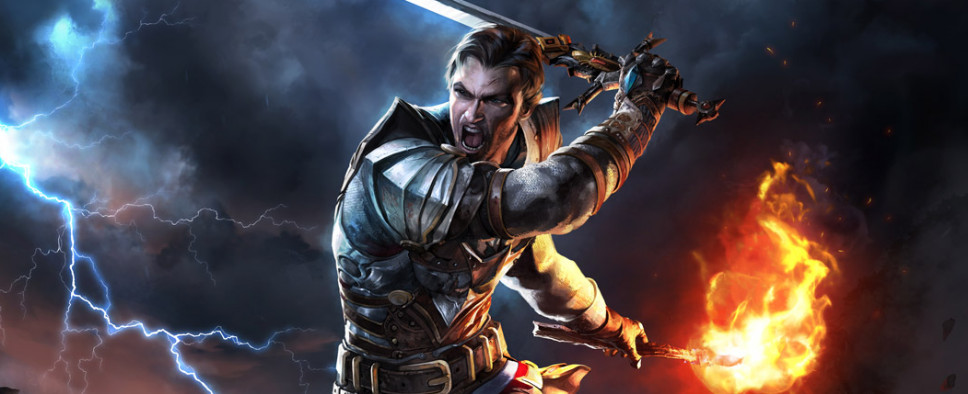Risen 3: Titan Lords Review
-
Category: ReviewsHits: 19859

Article Index
Combat and Difficulty
While combat in Risen 3 shares the same basic functionality with Risen 2, it's also been significantly tweaked in an attempt to provide a more satisfying experience. Just like in Risen 2, you can equip two weapon types: A primary weapon, and a secondary, situational weapon. Primary choices include an assortment of melee weapons (all of which, unfortunately, use the same set of combat moves), muskets and shotguns, and even a crystal glove that can be equipped with different types of offensive magic. Meanwhile, secondary weapons come in the form of pistols, crossbows, daggers, and the occasional bomb. The more outlandish "dirty tricks" from Risen 2, like the disturbing parrot and the coconut, have been removed. On top of that, all characters have a dodge roll move to get out of the way of danger.
While secondary weapons as well as muskets and shotguns work more or less like they did in Risen 2, melee feels different. Aside from the normal light melee combo, which now let you close in distance with a target in a fairly fast way (think of The Witcher 2: Assassins of Kings or the Batman: Arkham games), you can hold the attack button to do more damage and break enemies out of their parries, and parry humanoid and monster enemies yourself, though some attacks are still unblockable. You're supposed to analyze the enemy patterns and decide what strategy is the best, though in hindsight, rolling out of danger and striking back with fast attacks is almost always a surefire strategy. Crystal glove magic feels like a hybrid of muskets and melee: Normal attacks perform small short-range combos, while using the right button lets you aim with a reticle instead of blocking. Rune magic and Voodoo are implemented in a more classic way: you can either use consumables (scrolls, runes, and dolls) or learn spells and place them in your hotbar. Rather than using mana or a similar resource pool, Risen 3 uses cooldowns for spellcasting: A global, short one between each spell cast, and a longer one for repeated uses of the same spell.
Overall, Risen 3 offers a fairly good variety in terms of killing tools and is less stingy when it comes to giving players a chance to try them: You start the game with a melee weapon and a pistol, and can find spell scrolls and even muskets fairly early on. Pretty much every weapon type is available from the beginning with the exception of the Guardians' crystal gloves, which are only offered to players who join that faction. This approach was also applied to world design, with enemies that tend to be far tamer and less dangerous than they have ever been in a Piranha Bytes games, giving more room to explore and experiment for starting characters.
To tell you the truth, I'm disappointed. The game's enemy and encounter design lead to a difficulty curve which starts easy and ends up even easier. There are very few mini-bosses scattered throughout the islands, and there were few places where exploring made me feel endangered. Furthermore, the enemies simply aren't all that different in terms of patterns and resistances, with the AI of humanoids in particular leaving much to be desired. The only exceptions that come to mind, at least in the early game, are Shadow Guardians and Shadow Lords. The first are brutish, fast humanoid opponents that can easily break your guard and snap into attacks unexpectedly. The seconds are mini-bosses that can teleport and have both ranged and melee attacks, usually accompanied by weaker minions.
Speaking of crowds and encounter design, I also have to mention a few problems I had with the combat system. There still is no lock-on option to focus on a single target. As such, while fighting in a crowd, I'd often end up attacking the wrong enemy and wasting my time. Furthermore, the increased freedom of movement in combat is often severely limited by the map design, which seems to be made for a different game with more static engagements. In practice, if you happen to get too far while maneuvering, you might find yourself drawing the attention of even more enemies. It might add to the danger (though not very much), but also looks goofy and unintended. A better way to raise the stakes would have just been to make fewer encounters, but also design them to be tougher and requiring a more tactical approach.
The bosses fare better than they usually have in the series, though I would hesitate to actually call them good. Two of them follow the same simple design pattern of minions defending a damage sponge that can heal itself but isn't too dangerous in melee, while the third one is your typical Piranha Bytes gimmicky boss. I enjoyed the first two far more than the latter, but I can say there's still plenty of room for improvement in this aspect of game design for the series. That's assuming the series actually needs boss fights, something I don't agree with.

